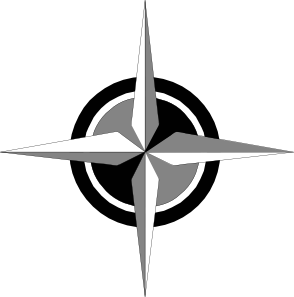Assumptions:
For these instructions to do you any good, you need to know (or learn from sources other than this document)
Techy stuff
Basics of using a GPS. You need to be able to mark a waypoint, go to an existing waypoint, determine current accuracy, use the map display.
Basics of using OziExplorer. You need to be able to calibrate a map image, set the datum, read and write data from the GPS, export and import waypoints as Ozi formatted files and as text files that Access can understand.
Basics of using Microsoft Access. Some familiarity with access database design and modification will be necessary to create new reports, or change the way things are done.
Basics of using MapMaker Pro. (MMP) This is the program used for creating the maps. It’s big, it’s messy, it’s counter-intuitive. Make a backup before using it the first time.
Basics of using Microsoft Excel. Skill with formulas will be necessary if you want to modify the scoring system.
Who am I kidding? You need more than the basics. But you probably don't need to be an expert.
Race Country
This assumes that you have a suitable area to run these races in. You will need a good map. (You may have a local orienteering club that has good maps of areas large enough to run a race. You may have to make your own map. That takes another half year.))
You also need an area to do the training in. Best is a large meadow that you can put up permanent markers. This can be a corner of your main area.
Possible race country areas: Community Pasture (Crown land with a mix of pasture and forest rented out to local ranchers in summer.) Provincial forest land. (Not good unless you can find a patch with a good mix of forest and non-forest.) Provincial park land. (May get upset with permanent control markers) Large local ranch. (Good solution.)
If Rogaine is run in winter, getting permission to run it in cattle country is not difficult. Most cows are in a feedlot.
Program Assumptions:
- You are implementing close to the same program St. John's did.
- Training in the fall.
- Races spaced closely together in January and February. *
- All teams were all present.
Simplifications that may help:
The first race or two has pre-plotted controls. This cuts the planning effort by the team captains in half.
The first race is a training event. This requires more training for the leaders so they can teach on the trail as needed.
Instead of running a short season run it for the whole year. Once you have an established core, they can cope with untrained team members. A first race in September can occur before much of the safety material. It also makes it easier for captains to stop and teach a new kid something.
Most years we had 4 races in the season, but it wasn't until the last one or two that the kids got good at it. I would suggest 6 races in a season,
Scoring options
The championship is based on a weighted score that gave more weight to the later events. E.g. Final score = ( 1 * first race + 2 * second race + 3 times third rade... 6 times 6th race. ) / (1+2+3...+6) You need to decide what to do about a team that misses a race.
We ran our races with increasing times. E.g. The first race might be 8 hours, and the last one 12 hours. This, coupled with the increasing skill makes scores for the last race of the season much larger than for the first race.
I played with various weighting schemes. If all the races count, it takes something really weird happening to make a difference in the final outcome.One year is was just combined total for all 4 races.
Or you can just have the championship determined by the last race. All the races up to that are just training events. This has merit in that missing a race doesn't cost anything.
Team size
I consider 4 to be the minimum safe number for winter adventure programs. If you implement separate leaders, this still works with a team size of 3.
Larger teams aren't much more effective. You get some benefit in searching, and you have more people to share the trail breaking, but there are more stops to tie a boot, get a drink. Fence crossings take longer. I saw a captain with a 7 man team. Herding cats.
A larger team means that someone can be sick or gone to their grandparents, or be involved in their peewee hockey playoffs.
I would suggest a roster of 6. Everyone has to complete half the races for the season. 4 is the minimum a team can have in a race, with the max being 6. Note: This has implications for your training. You still need a qualified captain and navigator.
